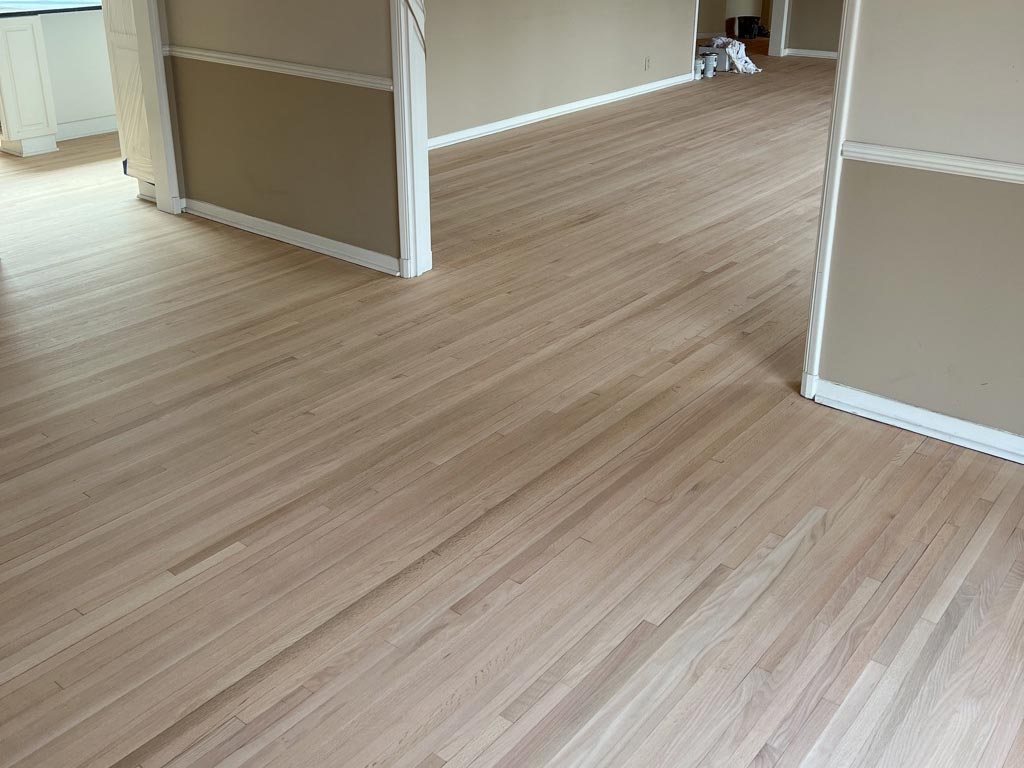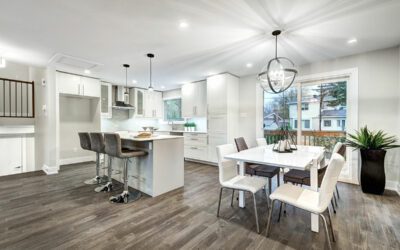Hardwood Flooring Installation Methods
Installation Methods for Hardwood Flooring
Hardwood flooring comes in two different types (solid hardwood + engineered hardwood) and each comes with unique installation methods.
When picking hardwood flooring installation methods, we advise you to know the installation needs of your space before moving ahead with stylistic choices. Don’t worry if you don’t know your installation needs.
At Lakeside Floor Coverings, we can help you understand how to pick the best flooring solution for your residential or commercial flooring project.
As you read, you will see some pros and cons of different wood flooring installation options and some insightful considerations when it comes to choosing your wood flooring solution.
Pros/Cons of Hardwood Flooring Installation Methods
There are three ways to install hardwood floors: nail-down, glue-down, and a floating floor install.
Nail-down: This installation method is pretty simple. Nails (usually staples or cleats staples) are used to secure the wood planks directly to the wood subfloor.
|
Pros |
Cons |
|
+ Speedy installation process with no wait time for products to dry |
✖ Requires a specific subfloor |
|
+ Allows for custom patterns and design |
✖ If the nails loosen, a creaking/squeaking noise can result |
|
+ Relatively easy to remove planks if needed |
✖ Consider vertical obstacles like cabinets or door frames |
Glue-down: As the name suggests, a strong adhesive is applied that brings together the subfloor and your wood flooring option. Think of it like gluing two pieces of paper together.
|
Pros |
Cons |
|
+ Some glues come with a moisture barrier, increasing the ability to deflect residual moisture |
✖ More complicated installation process – subfloors need to be prepped |
|
+ Most long-lasting, stable install option – gives a very solid underfoot feel |
✖ More expensive to remove |
|
+ Usually requires less transitions |
✖ Longer installation process given the glue drying time |
Floating: Think of a puzzle when you think of a floating-floor install. The wood planks “click” together and rely on a tongue and groove plank construction.
|
Pros |
Cons |
|
+ Fairly uncomplicated process |
✖ Room size limitations |
|
+ Best soundproof option – ideal for apartment complexes or other areas where sound travel might be an issue |
✖ Might require the use of transitions |
|
+ Wood floors are given the space to contract and expand as needed |
✖ Generally can’t be used with solid hardwood planks |
|
+ Generally costs less |
✖ Might need to consider an underlayment |
Get in touch with our team to discover your floor covering and installation options. We’re looking forward to working with you.

Considerations & Recommendations
At Lakeside Floor Coverings, we know that each customer comes to us with their own unique needs for their flooring project. Below is a collection of recommendations that we’ve complied for you to consider:
– Community properties like apartments do well with a floating installation method due to its sound-absorbing qualities.
– Residential areas like the living room, den, and dining room do very well with hardwood flooring.
– Engineered hardwood can be installed over radiant heating systems or concrete subfloors.
– Areas with moisture and/or in below-grade spaces (like a basement) require an engineered hardwood variety.
– A ¾ in plywood is the preferred subfloor.
– No matter your choice, let your wood flooring acclimate to your specific environment!
Conclusion – Hardwood Flooring Installation Methods
As you can see, it’s important to consider more than just what you want your floors to look like when you are selecting your hardwood flooring option. Consider the pros and cons of the different installation options as well as other installation process considerations we’ve provided.
If you have any questions that we haven’t answered here, know that we can answer them!
Our hope at Lakeside Floor Coverings is that our customers leave our store feeling that we’ve armed them with the necessary education so that they’re prepared to make a solid flooring choice. Our customers are proud of flooring solutions and we take great pride in knowing we helped make this happen!
We’d love to work with you! Contact us today to start a project! 763-503-0100
RELATED POSTS
What is LVP Flooring?
What is LVP? If you’ve found your way to this page, it likely means you are ready to install some new...


